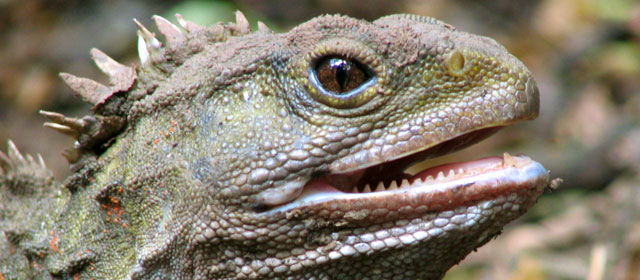Story summary
What are tuatara?
Tuatara are lizard-like reptiles, with spines along their neck, back and tail. There are two species: the common tuatara, and the Brothers Island tuatara. They are the only survivors of an ancient lineage of reptiles – their ancestors lived alongside dinosaurs, over 220 million years ago.
A national treasure
Tuatara live only in New Zealand. They feature in some Māori creation stories, and some tribes believe they are the guardians of knowledge.
Where they live
Tuatara used to live throughout the country, but the rats introduced by humans have killed them on the mainland – they now live only on 37 offshore islands. Stephens Island (Takapourewa), in Cook Strait, has the largest tuatara population – about 30,000.
Life history
Tuatara are mainly active at night, but also come out during the day to bask in the sun. They live in burrows, which they sometimes share with seabirds. They eat seabird chicks, lizards, frogs, insects and other small invertebrates (animals without a backbone).
In spring, females lay 6–10 eggs, which they bury for warmth. A year later, the hatchlings emerge and must fend for themselves. Tuatara can live for a long time – 80 years or more.
Conservation
Attempts are being made to increase tuatara numbers and reintroduce them to the mainland. Most tuatara islands have been freed of rats. Tuatara eggs are collected, and the young hatch in captivity. They are then released in sanctuaries, such as the Karori Wildlife Sanctuary in Wellington.





